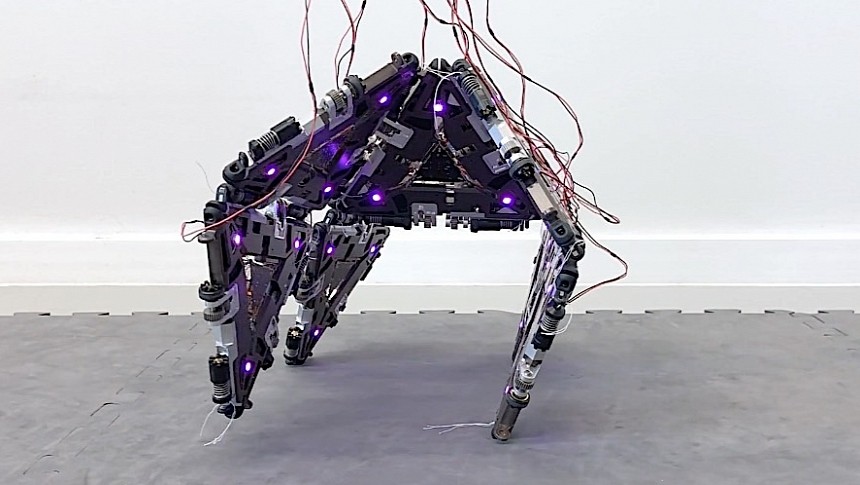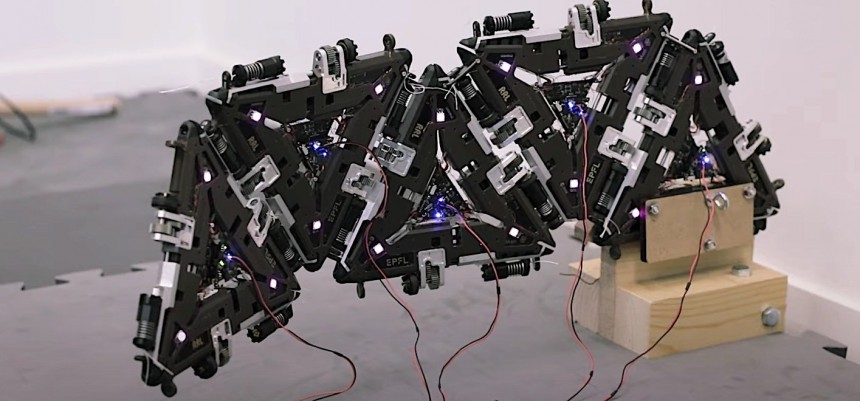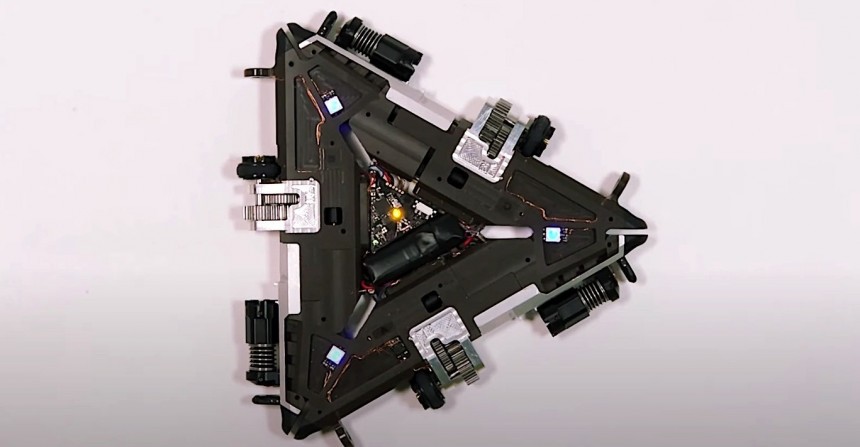Before becoming a hero of the Star Wars Universe, R2-D2 had a single goal in its robotic life: repair spaceships damaged in battle or elsewhere, including while said ships were still on the move. And that's kind of what Mori3 could be used for.
There's a good chance you have no idea what Mori3 is, and no one can blame you. After all, the thing just popped in the news earlier in June, after a team of researchers from the École Polytechnique Fédérale de Lausanne (EPFL), in Switzerland, published a paper in the Nature Machine Intelligence online journal.
Led by Jamie Paik, the team decided it would be a good idea for them to look into how things like polygon shapeshifting and polygon meshing could work to create a highly versatile robot that could be used for a large variety of tasks. And so the Mori3 was born.
One important aspect of polygons is that they are two-dimensional, and so are the ones that can form the Mori3 robot. By the way, Mori is an acronym for Modular Origami Robots. In essence, every component of the machine (called modules) is a 2D triangle. Each such component has the ability to assemble into larger, 3D structures, like say manipulation arms, and then come apart for easier storage, for instance.
The process through which this is achieved is called polygon meshing. It's a term we're familiar with from the world of computer graphics (and by that, I mean mostly from video games), where the technique is used to create 3D models and objects. The method, it seems, can be successfully applied in robotics as well.
Something like this has probably been done before, but the EPFL team behind Mori3 says what sets their idea apart is the capability of each robotic module to talk to each other, and mimic swarm behavior as we know it from the biological world.
What that means is that the modules don't need to be controlled to come together and form "almost any 3D object," but they can do so on their own as well, if need be.
Another trick this thing can do and others can't, aside from changing shape, is to grow or decrease in size depending on needs. When adopting a four-legged form, for instance, the robot can grow taller by attaching more triangles to the legs. The same goes for any other kind of form or being the machine tries to mimic.
But going for such a specialized niche of human activity doesn't make things very profitable, so a commercial component will probably be needed. We're told Mori could be the perfect companion for disabled people, especially since it will be capable of interacting with the folks around it. Additionally, it could be used to move furniture around the house, or pick up and drop objects, thanks to the articulated nature of its combined elements.
The team working on the project does warn though that this is a general-purpose robot, meaning it will be somewhat less skilled at performing certain jobs which would better be left to more suited pieces of machinery. The exact limitations of the Mori system were not disclosed.
Even if the paper on the robot did shed some light on the approach, a lot of questions still remain, covering everything from how exactly these machines come together (both the mechanical and programming aspects of that) to how would one go about controlling such devices.
Provided the idea takes hold the of the minds and imagination of other people as well, we'll probably get some answers to those questions in the years ahead. It's doubtful though any of us will get to see Mori3 in action repairing a spaceship, R2-D2-style, anytime soon. Fingers crossed, though…
Led by Jamie Paik, the team decided it would be a good idea for them to look into how things like polygon shapeshifting and polygon meshing could work to create a highly versatile robot that could be used for a large variety of tasks. And so the Mori3 was born.
What is the Mori Polygon Robot?
As most of you already know, a polygon is a geometrical figure with at least three straight sides and angles. In our world, we can find polygons virtually anywhere, in the form of triangles, quadrilaterals, and pentagons – yes, just like the Pentagon building.One important aspect of polygons is that they are two-dimensional, and so are the ones that can form the Mori3 robot. By the way, Mori is an acronym for Modular Origami Robots. In essence, every component of the machine (called modules) is a 2D triangle. Each such component has the ability to assemble into larger, 3D structures, like say manipulation arms, and then come apart for easier storage, for instance.
The process through which this is achieved is called polygon meshing. It's a term we're familiar with from the world of computer graphics (and by that, I mean mostly from video games), where the technique is used to create 3D models and objects. The method, it seems, can be successfully applied in robotics as well.
What that means is that the modules don't need to be controlled to come together and form "almost any 3D object," but they can do so on their own as well, if need be.
Another trick this thing can do and others can't, aside from changing shape, is to grow or decrease in size depending on needs. When adopting a four-legged form, for instance, the robot can grow taller by attaching more triangles to the legs. The same goes for any other kind of form or being the machine tries to mimic.
What is the Mori polygon robot meant for?
First and foremost, the EPFL team designed the machine as an aid for space exploration. Its modularity makes it ideal for transport in disassembled form inside small spacecraft. When on sight, or when some work needs to be done, including spaceship or habitat repairs, it can come together in whatever 3D form, shape and size is needed to get the job done. The thing could also double as a communications tool withBut going for such a specialized niche of human activity doesn't make things very profitable, so a commercial component will probably be needed. We're told Mori could be the perfect companion for disabled people, especially since it will be capable of interacting with the folks around it. Additionally, it could be used to move furniture around the house, or pick up and drop objects, thanks to the articulated nature of its combined elements.
When will the Mori robot get here?
It's unclear at this point when and if the Mori system will actually make it into this world. At the time of writing, the research is at a proof of concept stage, meaning there's a lot of work ahead before something tangible is achieved.Even if the paper on the robot did shed some light on the approach, a lot of questions still remain, covering everything from how exactly these machines come together (both the mechanical and programming aspects of that) to how would one go about controlling such devices.
Provided the idea takes hold the of the minds and imagination of other people as well, we'll probably get some answers to those questions in the years ahead. It's doubtful though any of us will get to see Mori3 in action repairing a spaceship, R2-D2-style, anytime soon. Fingers crossed, though…













